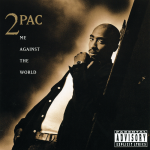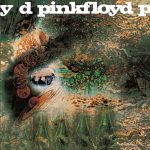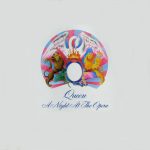
Category: Album
Title: The Division Bell
Artist: Pink Floyd
Released: March 28, 1994.
Genres: Ambient, Art Rock, Progressive Rock, Rock
Album Background
Release Date and Label
The Division Bell was released on March 28, 1994, by EMI Records in the UK and Columbia Records in the US.
Artist Context
The Division Bell is Pink Floyd’s fourteenth studio album and their last studio album with the classic lineup. It was released after a decade of legal disputes and internal conflicts following the departure of Roger Waters. The album represents a significant moment of reconciliation between the remaining members—David Gilmour, Nick Mason, and Richard Wright. The album was created during a period of renewed collaboration and reflects the band’s efforts to reconnect and find a new creative direction.
Concept and Inspiration
Themes and Messages
The album explores themes of communication, division, and reconciliation. It delves into personal and societal conflicts, with an emphasis on the need for understanding and connection. The title The Division Bell symbolizes the breakdown of communication and the desire to bridge divides, both within the band and in the broader world.
Inspiration
The album was inspired by the band’s experiences and reflections on their long history, as well as the personal and professional challenges they faced. The lyrics and themes reflect a desire to address unresolved issues and find common ground, both within the band and in their relationship with their audience.
Writing and Recording Process
Songwriting and Recording
The songwriting was primarily done by David Gilmour and Richard Wright, with contributions from Nick Mason. The recording process took place at various studios, including Astoria, Gilmour’s houseboat studio, and Britannia Row Studios in London. The band used a combination of traditional and modern recording techniques, incorporating synthesizers, samplers, and live instrumentation to create a rich and layered sound.
Notable Collaborations
The album features contributions from several guest musicians, including Tim Renwick on guitar, Guy Pratt on bass, and Jon Carin on keyboards. These collaborators helped to expand the album’s sonic palette and bring a fresh perspective to the band’s sound.
Production Details
Producers and Sound
- Key Producers: The album was produced by David Gilmour, Bob Ezrin, and Andy Jackson. Bob Ezrin, known for his work with Alice Cooper and Kiss, played a significant role in shaping the album’s sound, bringing a polished and contemporary feel to the production.
- Sound and Musical Style: The Division Bell features a blend of progressive rock, rock, and ambient music. The album is characterized by its lush instrumentation, introspective lyrics, and intricate arrangements. It combines traditional rock elements with modern production techniques, resulting in a polished and sophisticated sound.
Track-by-Track Analysis
-
Track Listing:
- “Cluster One”
- “What Do You Want from Me”
- “Poles Apart”
- “Marooned”
- “A Great Day for Freedom”
- “Wearing the Inside Out”
- “Take It Back”
- “Coming Back to Life”
- “Keep Talking”
- “Lost for Words”
- “High Hopes”
Key Tracks:
- “High Hopes”: The album’s closing track and one of its most significant, “High Hopes” reflects on the themes of nostalgia and the passage of time. The song combines uplifting lyrics with a sweeping musical arrangement, capturing a sense of both melancholy and hope. Its orchestral elements and memorable melody make it a standout track, and it has been praised for its emotional depth and lyrical poignancy.
- “What Do You Want from Me”: This track addresses themes of self-examination and the quest for personal fulfillment. Its catchy chorus and introspective lyrics explore the challenges of meeting expectations and the search for meaning in one’s life. The song’s production, with its distinctive guitar riffs and atmospheric keyboards, highlights the band’s ability to blend rock with introspective themes.
- “Keep Talking”: Featuring a prominent sample of Stephen Hawking’s voice, “Keep Talking” addresses themes of communication and the power of dialogue. The track’s innovative use of technology and its engaging rhythm make it a notable example of the band’s experimentation with new sounds and ideas. The song’s message of the importance of maintaining open lines of communication is central to the album’s themes.
- “Coming Back to Life”: This track showcases the band’s signature blend of atmospheric instrumentation and emotional lyrics. “Coming Back to Life” explores themes of renewal and recovery, with its powerful guitar solos and evocative lyrics capturing a sense of personal transformation. The song’s dynamic arrangement and expressive delivery make it a memorable part of the album.
Awards and Nominations
Awards and Nominations
The Division Bell received several nominations and awards, including a Grammy nomination for Best Rock Performance by a Duo or Group with Vocal for “Marooned,” which won the Grammy for Best Rock Instrumental Performance.
Sales and Charts
The album was a commercial success, reaching number 1 on the UK Albums Chart and number 1 on the US Billboard 200. It has been certified Platinum in the UK and Gold in the US, among other certifications worldwide. The success of the album reaffirmed Pink Floyd’s position as a major force in rock music.
Impact and Legacy
The Division Bell represents a significant moment in Pink Floyd’s career, showcasing their ability to adapt and evolve while maintaining their core essence. The album’s exploration of themes related to communication and reconciliation resonated with audiences and highlighted the band’s continued relevance. The album also marked the end of an era for Pink Floyd, as it was their last studio album before the band members pursued individual projects. Its legacy is reflected in its enduring popularity and the continued appreciation of its musical and lyrical depth.
Conclusion
Summary
The Division Bell is a notable album in Pink Floyd’s discography, representing a period of renewal and reconciliation for the band. With its themes of communication and personal reflection, the album captures a sense of introspection and growth. Its blend of progressive rock, rock, and ambient elements demonstrates the band’s ability to create a rich and immersive musical experience.
Final Thoughts
While The Division Bell may not have the same groundbreaking impact as some of Pink Floyd’s earlier works, it stands as a testament to the band’s enduring creativity and ability to address meaningful themes. The album’s polished production and thoughtful lyrics showcase the band’s continued artistic vision, making it a valuable and memorable part of their legacy.



















Leave a Reply